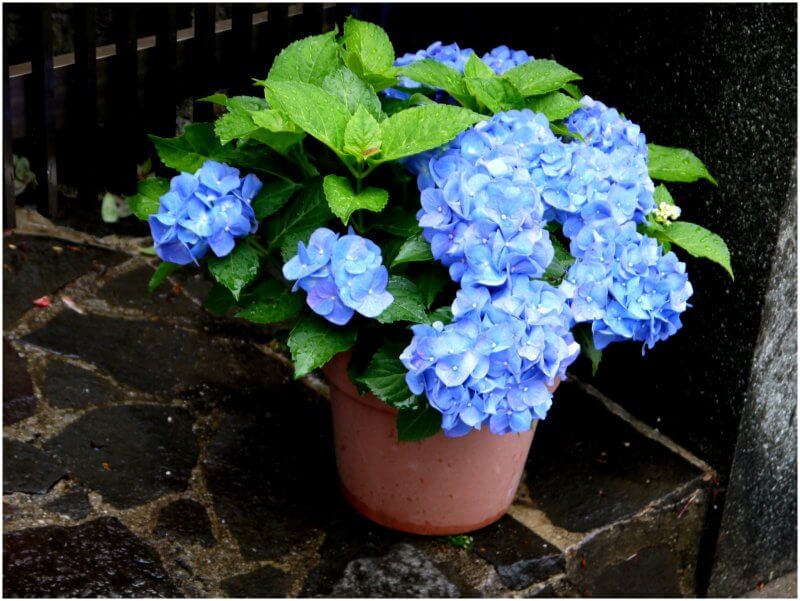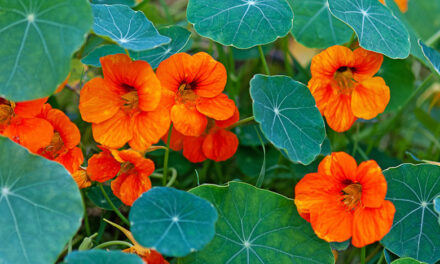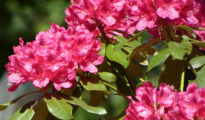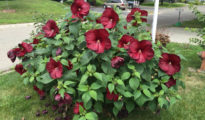There's something undeniably captivating about hydrangeas. These lush, colorful, and versatile flowering shrubs have a way of transforming any garden or landscape into a picturesque haven. With their voluminous clusters of blooms and a wide array of hues, hydrangeas are the epitome of beauty and elegance. However, at times, even the most enthusiastic gardeners can find themselves wondering, “Why aren't my hydrangeas blooming?” Fear not! In this comprehensive blog post, we'll delve into the world of hydrangeas, explore the reasons behind their lack of blooms, and uncover valuable tips for hydrangea flower care.

Hydrangea Varieties
Before we dive into the intricacies of hydrangea care, let's take a moment to appreciate the diverse range of hydrangea varieties available. From the classic bigleaf hydrangeas (Hydrangea macrophylla) with their stunning mophead or lacecap flower clusters to the graceful oakleaf hydrangeas (Hydrangea quercifolia) and the delicate panicle hydrangeas (Hydrangea paniculata), each variety possesses its own unique characteristics and care requirements.
Why Aren't My Hydrangeas Blooming?
- Improper Pruning: Pruning hydrangeas at the wrong time or inappropriately can prevent them from producing flowers. Different hydrangea varieties have specific pruning requirements, so understanding the pruning guidelines for your particular hydrangea is crucial.
- Insufficient Sunlight: Hydrangeas generally thrive in dappled or partial sunlight. Lack of adequate sunlight can result in reduced bud formation and subsequent blooming issues.
- Extreme Temperatures: Sudden temperature fluctuations, especially during spring, can negatively impact hydrangea blooming. Late frosts or unseasonably warm weather can disrupt bud development, leading to a lack of blooms.
- Improper Soil Conditions: Hydrangeas prefer well-draining soil that is rich in organic matter. Unsuitable soil pH can affect nutrient availability, resulting in poor blooming. Acidic soil generally produces blue flowers, while alkaline soil yields pink or mauve blooms.
- Improper Watering: Overwatering or underwatering can hinder flower production in hydrangeas. Striking a balance and providing consistent moisture levels is crucial for their overall health and blooming success.
Hydrangea Flower Care:

Sunlight and Shade: Most hydrangeas thrive in partial shade or dappled sunlight. Morning sunlight and afternoon shade are ideal for ensuring optimal blooming. However, some panicle hydrangeas can tolerate full sunlight.
Soil Preparation: Prior to planting hydrangeas, prepare the soil by adding organic matter like compost or well-rotted manure. Maintain a slightly acidic to neutral soil pH (around 5.5 to 7) for optimal nutrient absorption and vibrant flower color.
Watering and Moisture: Hydrangeas require regular watering, especially during hot and dry periods. Aim for a consistent level of moisture in the soil, without letting it become waterlogged. Applying mulch around the base of the plant helps retain moisture and suppress weed growth.
Fertilizing: Apply a balanced, slow-release fertilizer specifically formulated for flowering shrubs in early spring. Avoid excessive use of high-nitrogen fertilizers, as they can promote leafy growth at the expense of flower production.
Pruning: Understand the specific pruning requirements for your hydrangea variety. Most hydrangeas benefit from pruning immediately after flowering or during the dormant season. Remove any dead or damaged wood, thin out crowded branches, and shape the plant to maintain its desired size and form.
Protecting from Frost: If you live in an area prone to late frosts or cold winters, consider providing protection for your hydrangeas. Covering the plants with burlap or a frost blanket during extreme weather conditions can help prevent damage to the buds and promote blooming.
Adjusting Flower Color: One of the fascinating aspects of hydrangeas is their ability to change flower color based on soil pH. To achieve blue flowers, lower the soil pH by adding amendments such as aluminum sulfate or sulfur. To encourage pink or mauve flowers, raise the pH with materials like lime or wood ash. Keep in mind that some hydrangea varieties, such as white-flowering ones, are not affected by soil pH.
Disease and Pest Management: Hydrangeas can be susceptible to certain diseases like powdery mildew and pests like aphids and spider mites. Regularly inspect the plants for any signs of damage or infestation. Treat accordingly with appropriate organic or chemical control methods to maintain plant health and blooming potential.
Hydrangeas are truly enchanting plants that add a touch of beauty and charm to any garden or landscape. By understanding the reasons behind their lack of blooms and implementing proper hydrangea flower care, you can ensure a breathtaking display of vibrant flowers year after year. Remember to address pruning requirements, provide suitable sunlight and soil conditions, maintain proper watering and fertilizing, and protect the plants from frost and pests. With these tips in mind, you'll be able to unlock the full blooming potential of your hydrangeas and enjoy their splendor throughout the seasons. Happy gardening!



















